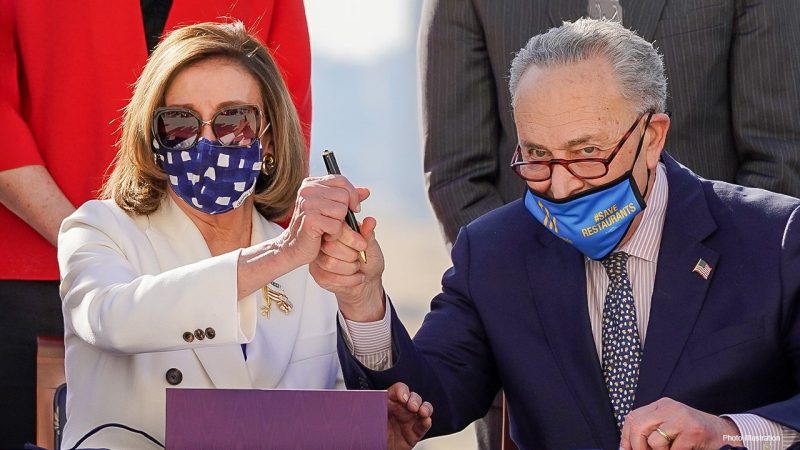The year 2022 might go down in history as the year America learned to stop worrying and love the national debt.
To deal with COVID, Congress approved record-high spending levels in fiscal years 2020 ($6.5 trillion) and 2021 ($6.8 trillion). By the time the pandemic eased and emergency spending started to taper off, anything less than those levels started to feel like fiscal austerity.
Rather than allow total spending to fall back to the pre-COVID levels of $4.4 trillion, Congress kept the pedal to the metal and President Joe Biden was happy to sign every spending bill that reached his desk.
Lawmakers passed the $1 trillion infrastructure bill in late 2021, allowing the Biden administration to push out a giant wave of grant funding for their favorite projects across the country in 2022. Congress passed the $750 billion Inflation Reduction Act in 2022, which was more of an environment-health spending bill than an antidote to the high inflation levels not seen in 40 years.
Lawmakers also approved a $280 billion bill to subsidize investment in semiconductor manufacturing, and they also approved $65 billion in Ukraine-related funding.
As a result of these and other bills, total spending for fiscal year 2022 came in at $6.3 trillion – almost as much as the record highs reached when COVID fear still gripped the nation. The elevated price tag left fiscal hawks wondering if COVID created an expensive new normal for taxpayers.
‘Have we literally just increased the baseline spending from $4.4 to $6 trillion? A $1.6 trillion increase, about a 36% increase?’ Sen. Ron Johnson, R-Wis., asked last week. ‘If that’s the case, we’ll never balance the budget.’
Johnson’s fear is justified so far as lawmakers seem to be treating $6 trillion as a new floor. This week, House and Senate Democrats are hoping to pass a $1.7 trillion full-year spending bill that would boost defense and social spending to new highs.
Johnson’s observation fits a pattern seen over the last 15 years. When the housing bubble burst in 2008, Congress accelerated spending and never looked back, even when the crisis was in the rearview mirror. When COVID came along, Congress found a higher gear and doesn’t seem to be in the mood to slow down.
One factor that is likely to at least dampen the spending party is the Republican takeover of the House. Minority Leader Kevin McCarthy, R-Calif., who hopes to become the next House speaker when Republicans take control of the chamber in 2023, isn’t happy about all the excessive spending and believes it’s time to slow down in order to reduce the inflationary effects of the trillions of federal dollars blanketing the nation.
‘Why is the interest [rate] going up?’ McCarthy asked last week. ‘Inflation. How did we get inflation? The runaway spending from the Democrats.’
But McCarthy may find it difficult to ‘starve the beast,’ as Reagan-era Republicans used to put it. Democrats control the Senate, and it’s unlikely they’ll be open to passing any bills to cut spending.
Even if Republicans and Democrats battle to a draw and spending stays frozen, it won’t feel like a spending freeze. That’s because one important component of federal spending is rising all on its own – interest payments on the national debt.
When government debt matures, the government doesn’t pay back the loan – it borrows even more. But now, that new borrowing will come with much higher rates.
How much higher? In fiscal year 2022, the government spent more than $500 billion on interest payments on the debt – a number that already rivals the annual defense spending bill and will grow even higher next year as the government begins to test the sustainability of a $7 trillion annual budget.

